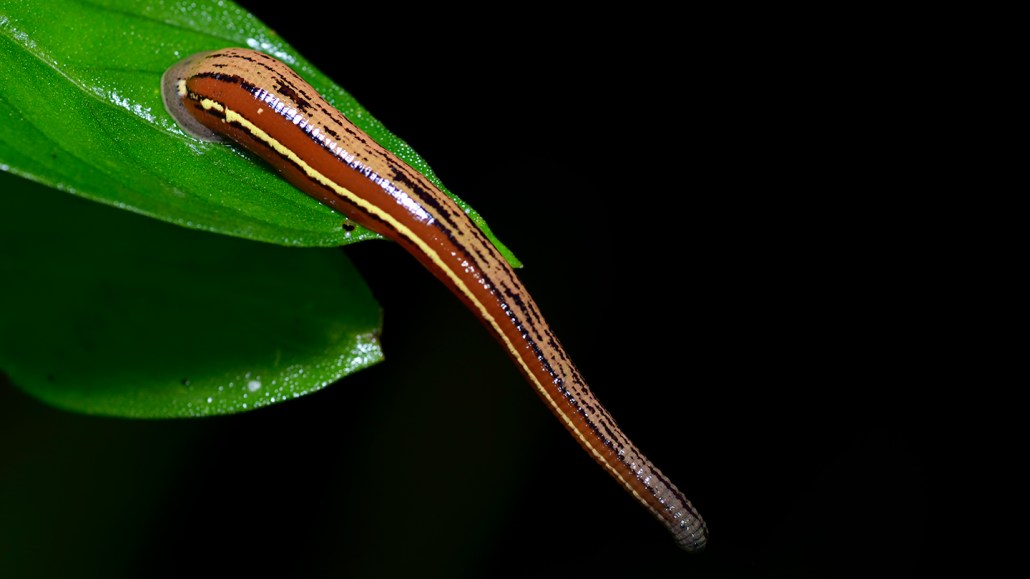Leeches expose wildlife’s whereabouts and may aid conservation efforts
DNA extracted from the parasitic worms’ blood meals lets scientists track where animals roam

Ecologists are using bloodthirsty leeches to evaluate the success of wildlife conservation efforts in China.
mrfiza/iStock/Getty Images Plus
Leeches suck. Most people try to avoid them. But in the summer of 2016, park rangers in China’s Ailaoshan Nature Reserve went hunting for the little blood gluttons.
For months, the rangers searched through the reserve’s evergreen forest, gathering tens of thousands of leeches by hand and sometimes plucking the slimy parasites from the rangers’ own skin. Each time the rangers found a leech, they would place it into a little, preservative-filled tube, tuck the tube into a hip pack and carry on. The work could help aid conservation efforts, at Ailaoshan and elsewhere.
There are many ways to measure how much effort goes into wildlife conservation, but it’s difficult to assess the success of that effort, even in protected areas, says Douglas Yu, an ecologist at the Kunming Institute of Zoology in China.
But bloodthirsty worms may be just the tool for the job. Leeches aren’t picky eaters — they’ll feast on the blood of many different creatures, from amphibians to mammals to fish. Scientists have shown they can extract animal DNA from blood that leeches and other bloodsucking creatures have ingested, what’s known as invertebrate-derived DNA, or iDNA, and identify the source animal.
And some researchers had suggested that iDNA, a type of environmental DNA, could be used to trace the ranges of animals in an area, Yu says (SN: 1/18/22). “We thought we would just actually just try to do it.”
Enlisting 163 park rangers, Yu and colleagues deputized the leech-hunters with gathering the parasites along rangers’ regular patrol routes, which covered all 172 areas of the reserve.
Three months later, the rangers had gathered 30,468 leeches. After extracting and analyzing animal DNA from the leeches’ blood meals, Yu and colleagues detected the presence of 86 different species, including Asiatic black bears, domestic cattle, endangered Yunnan spiny frogs and, of course, humans.
What’s more, the iDNA gave clues to where the animals preferred to roam, the researchers report March 23 in Nature Communications. Wildlife biodiversity was greatest in the reserve’s high-altitude interior, the researchers found, while domestic cattle, sheep and goats were more abundant in the reserve’s lower, more accessible zones. Because most of the wild species detected should be able to inhabit all parts of the reserve, the dichotomy suggests that human activity may be pushing wildlife away from certain areas, Yu says.
Compared with other methods for surveying wildlife, using iDNA from leeches is “really cost- and time-efficient and doesn’t require a lot of expertise,” says Arthur Kocher, an ecologist at the Max Planck Institute for the Science of Human History in Jena, Germany, who was not involved in the study.
Camera traps, for instance, are triggered only by animals of large enough size, and the instruments are expensive. Sight-based surveys require trained observers. With leeches, Kocher says, “there are clear advantages.”
Yu and Kocher both suspect that leeches and other bloodsucking critters, such as carrion flies or mosquitoes, will become more popular wildlife surveillance tools in the future. People are becoming more aware of what iDNA brings to the table, Yu says.





